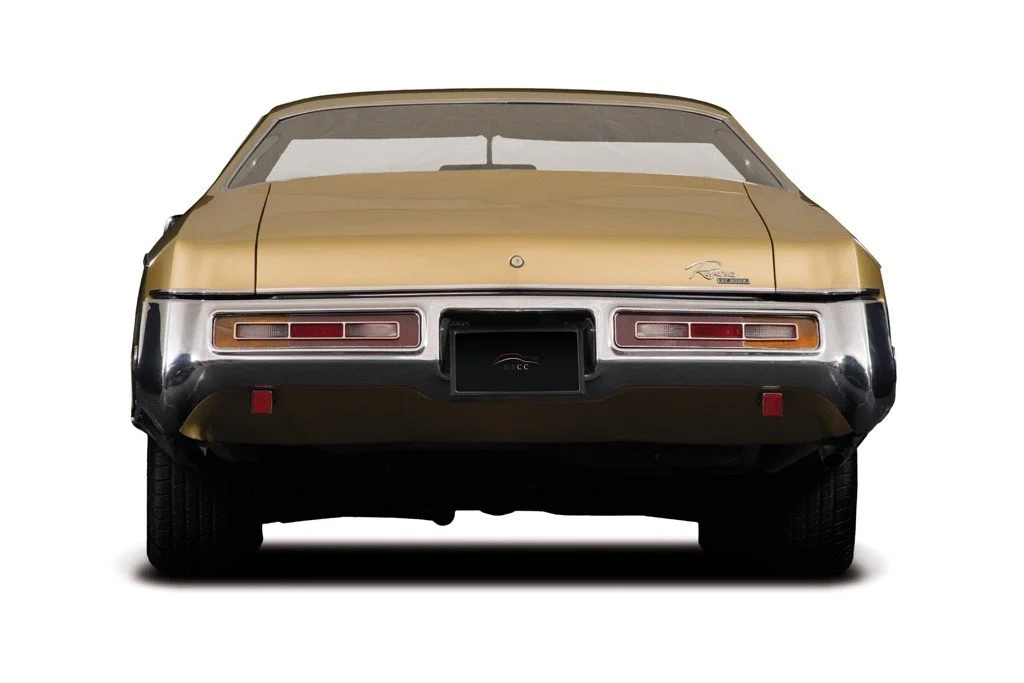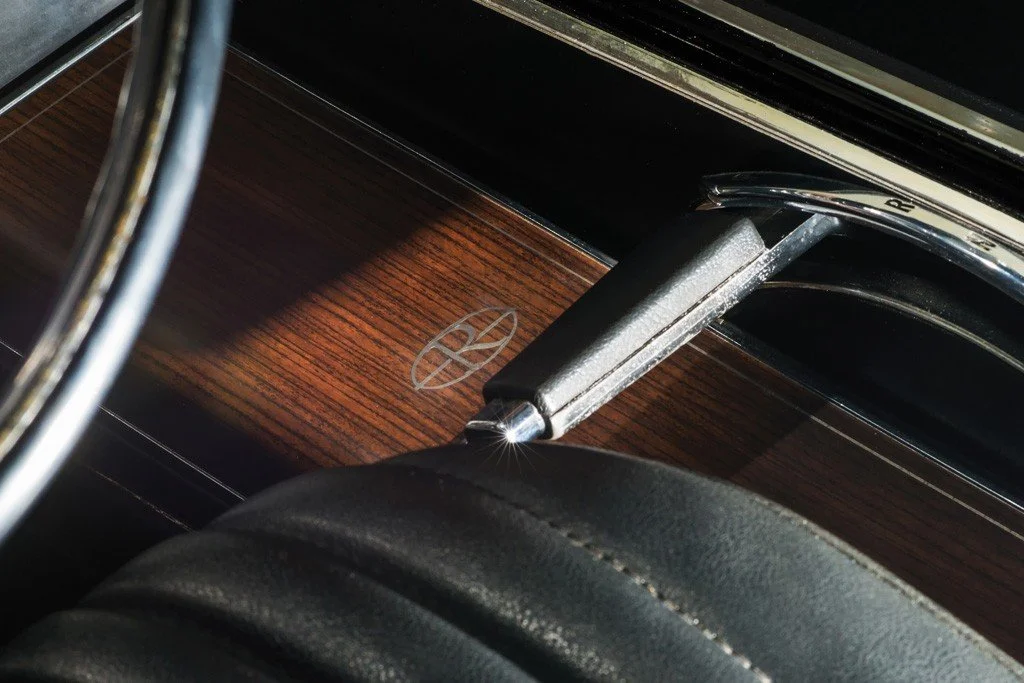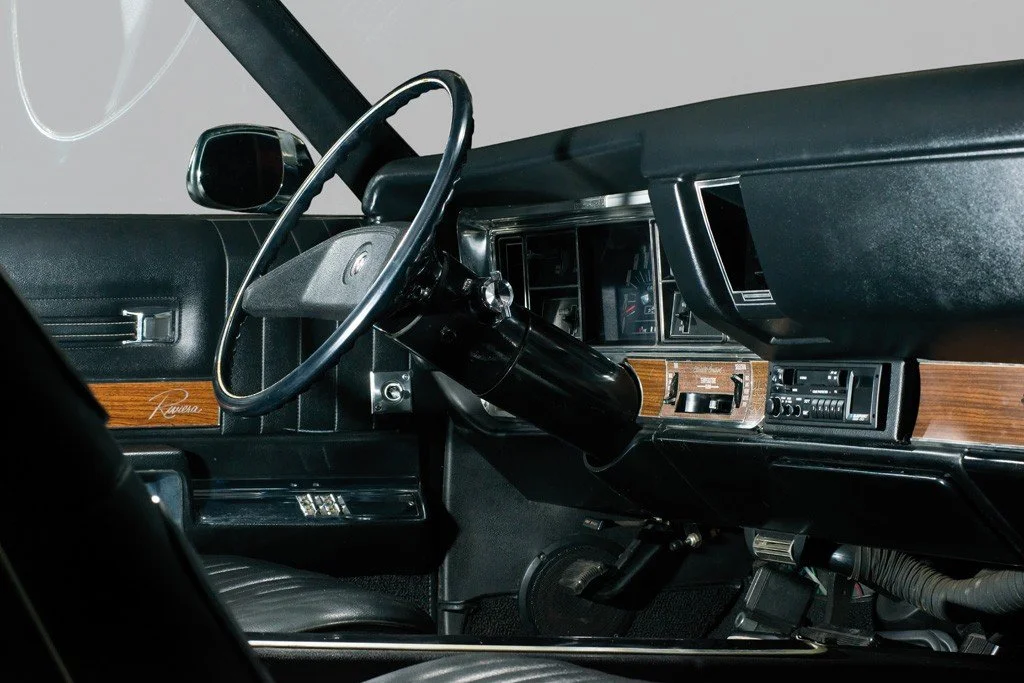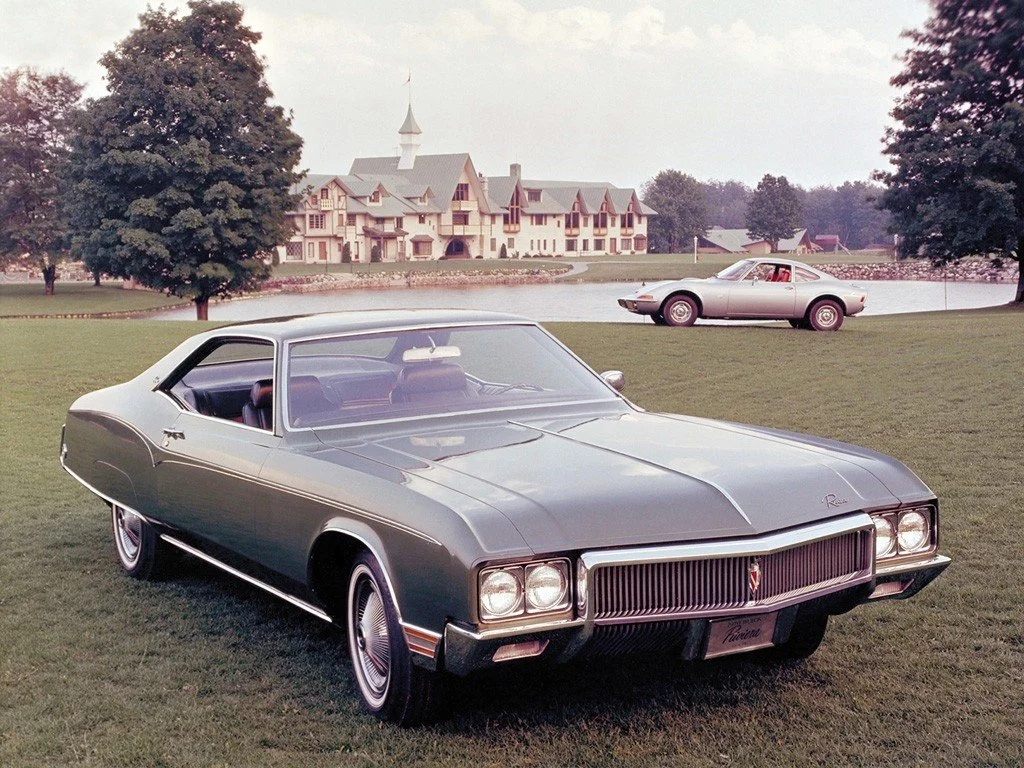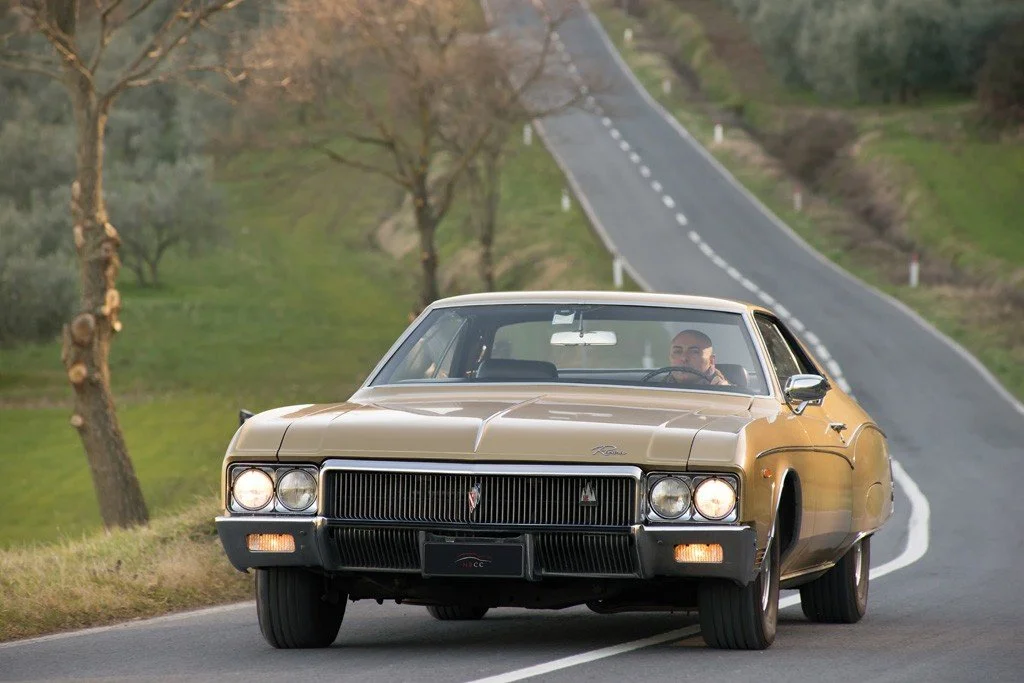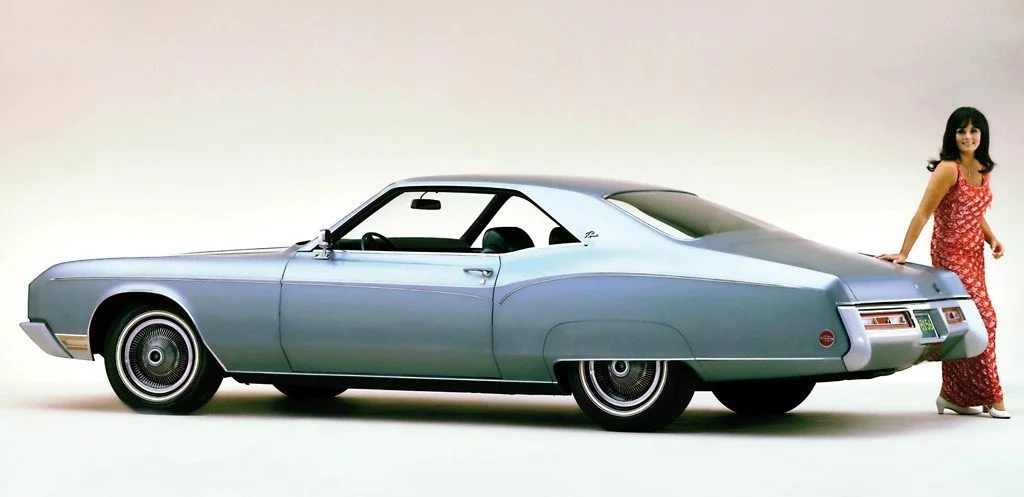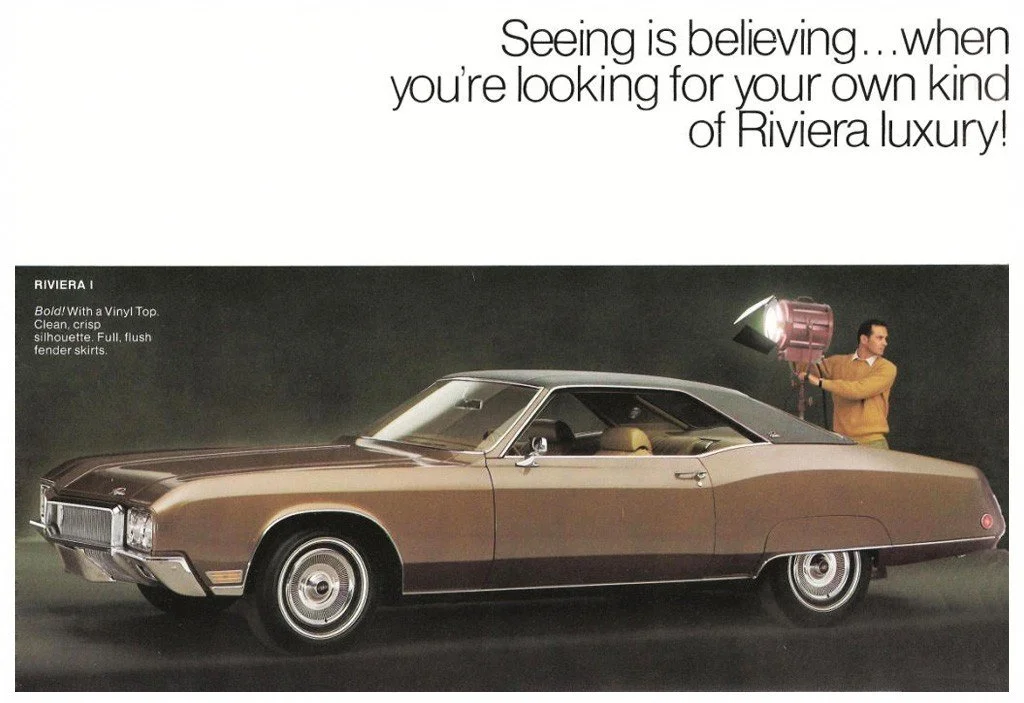-
The first owner of this 1970 Buick Riviera showed a preference for an elegant rather than a sports style. The car was originally sold new in Switzerland as an export model for the European market. After a long life, this Riviera, painted gold with interior in black vinyl, was found in a junkyard near Rome. The Nicola Bulgari Collection retrieved the car to use for spare parts for the restoration of another Buick but the Riviera proved too good to be sacrificed and it was decided to return it to its original splendor. The interior of the car was in reasonable condition, and it was mechanically sound, so it was restored to its original state, keeping its Cornet Gold color and interior in Black vinyl. The big block 455 cid 370 hp engine was given a new lease of life along with the Turbo Hydra-Matic 400 automatic transmission.
Today this splendid personal-luxury car proudly represents the second generation of the Buick Riviera in the Nicola Bulgari Collection. -
Company
General MotorsWheelbase
119inInterior trim
Black vinylBrakes
front and rear drumsMake
BuickLength
215.5inEngine
V8 - 455cidTires
H78x15Model
RivieraWidth
79.3inCarburetor
1 Rochester 4MV 4-barrelOriginal Price
$4,986Body style
2-door Hardtop CoupeWeight
4361lbsHorsepower
370hp @ 4600rpmProduction
37,366Model year
1970Exterior paint
Cornet GoldTransmission
Turbo Hydra-Matic 400 automatic 3-speed -
The second half of the sixties saw the beginning of the second generation Buick Riviera. From 1966 to 1970 the Buick personal-luxury range underwent significant restyling. While still aimed at the usual sophisticated enthusiasts, the Riviera showed body proportions similar to the muscle cars of the time. The short fastback-style tail counteracted a long hood arrogantly angled towards the road, the vent windows disappeared and the flanks curved sinuously into the “Coke-bottle shape”, the authentic style signature of the GM cars of the era. While sharing the “E-body “ cell with the contemporary Oldsmobile Toronado and Cadillac Eldorado, the originality of the model was still retained; unlike its “sisters” the Buick Riviera kept the rear traction and an evident leisure-sport leaning, thanks to the popular GS versions.
In 1967 a new 430 cid (7 liter) engine was installed, updated to 455 cid (7.5 liter) in 1970 without any significant increase in power; in any case its 370 hp allowed a Riviera, equipped with every possible comfort, to cover a quarter of a mile in 16.5 seconds and to reach a top speed of over 120 mph. In 1970 Buick Riviera ended production of the second generation started in 1966, with a total length of 5.47 m (a full 19 cm more than the first generation) and an aggressive line that showcased all the work of Bill Mitchell’s style center. The most obvious modification was the elimination of the retractable rear lights. The impressive protruding front grille was formed by sixty vertical chrome bars which continued “cascade” style to behind the fenders, creating an echo of the unforgettable 1950 Buick famous for its menacing chrome laden “set of teeth” ready to bite the asphalt. The classic Buick emblem sits proudly in the center, with its famous three shields, while on the left hand edge of the hood the inevitable “Riviera” logo in cursive letters can be seen. Another style reference to the 50s models can be noted in the chrome trim (optional) running almost the whole length of the side.
When choosing a 1970 Buick the customer was attracted by the “appearance options”, it was available in three different versions with multiple combinations to mix and match, meaning the final model would be as close as possible to one’s personal taste, sportive or classic. Browsing the original brochure, one could choose a vinyl roof and could opt for one of two styles of fender skirts for the rear fenders: the more sportive design left the wheels visible, whereas the more formal style partially covered them creating a “floating effect” of the car over the road surface.
For lovers of sports models the Gran Sport version was available with its usual upgrades package aimed at road handling; in 1970 nearly 9% of Rivieras were produced with the GS option. The possibility to vary the aesthetic feel of a car by altering few but decisive details was an essential characteristic, which nowadays makes it unusual to see one 1970 Riviera exactly the same as another.



